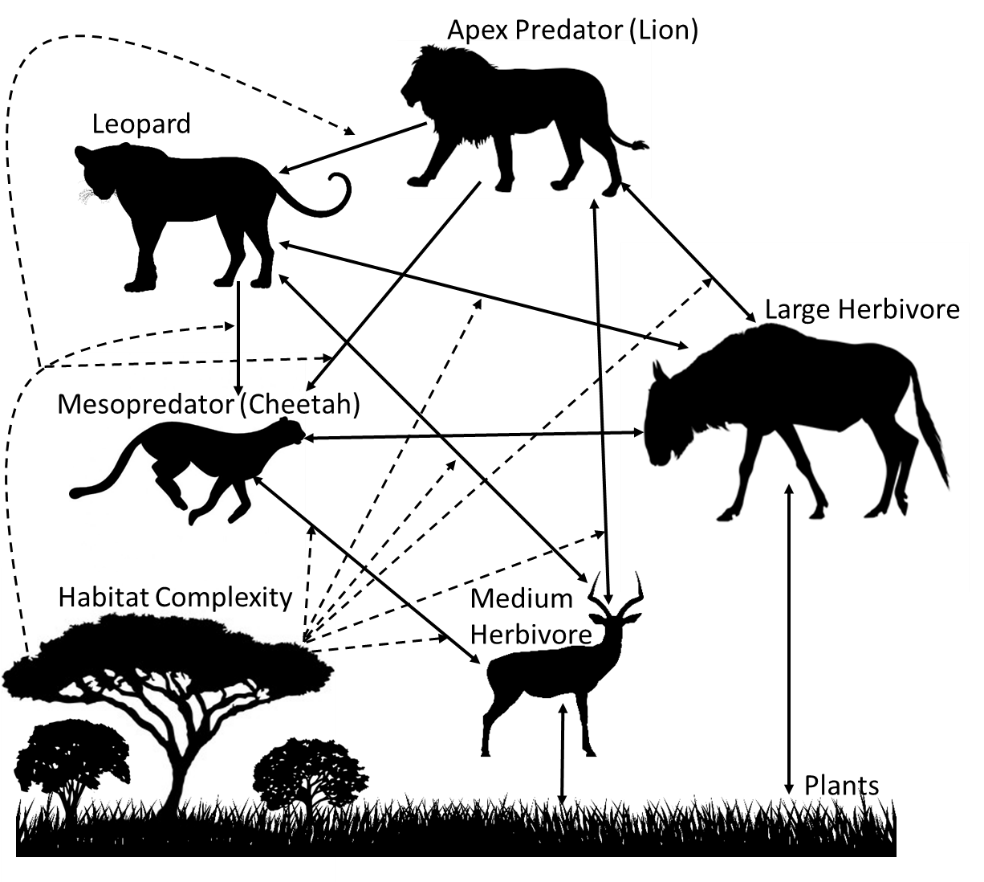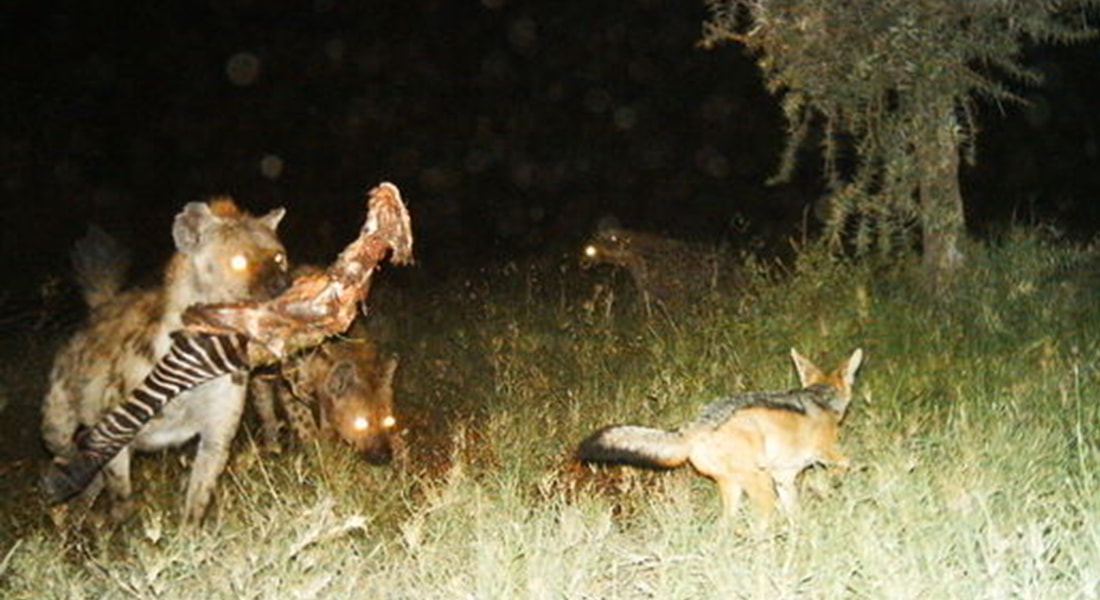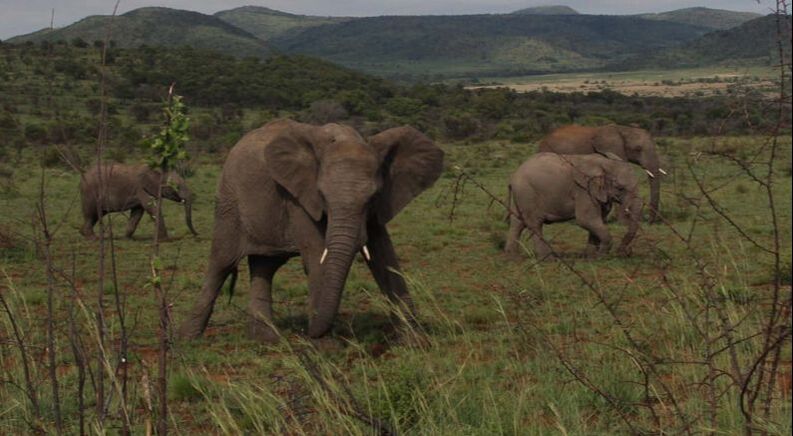South Africa is pioneering novel ways to conserve and restore wildlife. We are working with partners at the University of KwaZulu-Natal and several reserves in South Africa to understand the how wildlife are responding to restoration. This allows us to not only improve management of these restored populations, but ask important ecological questions about these large and often imperiled mammals.
CURRENT RESEARCH
Restoring and managing multi-carnivore systemsWe are working with Dr. Rob Slotow and collaborators in South Africa to investigate the ecology of large mammalian predators and their prey. Our investigations began with an interest in the biological and management factors that contribute to successful cheetah recovery and management following reintroduction.
Over time, this work has evolved to using cheetahs as focal points for understanding broader mammalian community dynamics. While cheetahs are big cats, they are typically mid-ranking or mesocarnivores in these systems, exposed to both top-down (lions, leopards, hyenas) and bottom-up (prey, habitat conditions) factors - thus making cheetahs good sentinels for environmental change. Project Collaborators: University of KwaZulua-Natal, Phinda Game Reserve |
Related Scientific Papers:
Gigliotti, L., R. Slotow, C. Sholto-Douglas, C. de Vos and D.S. Jachowski. 2022. Community-level responses of African carnivores to prescribed burning. Journal of Applied Ecology. 59:251-262. Gigliotti, L., R. Slotow, C. Sholto-Douglas, C. de Vos and D.S. Jachowski. 2021. Short-term predation risk and habitat complexity influence cheetah anti-predator behaviors. Animal Behaviour 178:175-184. Gigliotti, L.C., R. Slotow, L.T.B. Hunter, J. Fattebert, C. Sholto-Douglas, and D.S. Jachowski. 2020. Habitat complexity and duration of predation risk influence mesopredator survival in a multi-predator system. Scientific Reports 10:17841 Gigliotti, L.C., R. Slotow, L.T.B. Hunter, J. Fattebert, C. Sholto-Douglas, and D.S. Jachowski. 2020. Context-dependency of top-down and bottom-up influence on cheetah demography. Journal of Animal Ecology 89:449-459 |
Snapshot SafariWe are working in collaboration with a large and dynamic group of researchers interested in using large-scale camera trap arrays spaced across southern Africa to assess patterns in species distribution and occupancy. Goals of the project are to not only gain information on management effectiveness, but patterns in animal community ecology.
More information on the Snapshot Safari project can be found here and here. |
Related Scientific Papers:
Pardo, L.E., S. Bombaci, S.E. Huebner, M. Somers, H. Fritz, C. Downs, A. Guthman, R. Hetem, M. Keith, A. le Roux, N. Mgpatsa, C. Packer, M.S. Palmer, D. Parker, M. Peel, R. Slotow, W.M. Strauss, L. Swanepoel, C. Tambling, N. Tsie, M. Vermeulen, M. Willi, D.S. Jachowski, and J. Venter. 2021. Snapshot Safari: a large-scale collaborative to monitor Africa’s remarkable biodiversity. South Africa Journal of Science 117:8134. |
Physiology and behavior of African elephantsOur first work in Africa focused on the behavior and stress physiology of elephants that were being reintroduced to South Africa. We combined non-invasive sampling of stress hormones with fine-scale GPS collar data to gain new insights into how physiological stress likely influences movement behavior. This work has led to several additional studies where we investigated the link between stress physiology and space use by elk in relation to human disturbance in eastern Washington, Jachowski, D.S., S. McCorquodale, B.E. Washburn, and J.J. Millspaugh. 2015. Human disturbances and the physiological response of elk in Eastern Washington. Wildlife Biology in Practice 11:12-25. migratory behavior of mule deer in Wyoming: Jachowski, D.S., M.J. Kauffman, B.R. Jesmer, H. Sawyer and J.J. Millspaugh. 2018. Integrating physiological stress into the movement ecology of migratory ungulates: a spatial analysis with mule deer. Conservation Physiology 6:coy054. and more broadly called for an integration of physiological data in the study of animal movement: Jachowski, D.S., and N.J. Singh. 2015. Toward a mechanistic understanding of animal migration: Incorporating physiological measurements in studies of animal movement. Conservation Physiology 3:cov035. |
Related Scientific Papers:
Jachowski, D.S., R. Slotow and J.J. Millspaugh. 2014. Good virtual fences make good neighbors: Opportunities for conservation. Animal Conservation 17:187-196. Jachowski, D.S., R. Slotow and J.J. Millspaugh. 2013. Delayed physiological acclimatization by African elephants following reintroduction. Animal Conservation 16:575-583. Jachowski, D.S., R.A. Montgomery, R. Slotow and J.J. Millspaugh. 2013. Unraveling complex associations between physiological state and movement in African elephants. Functional Ecology 27:1166-1175. Jachowski, D.S., R. Slotow and J.J. Millspaugh. 2013. Corridor use and streaking behavior by African elephants in relation to physiological state. Biological Conservation 167: 276-282. |
Proudly powered by Weebly


